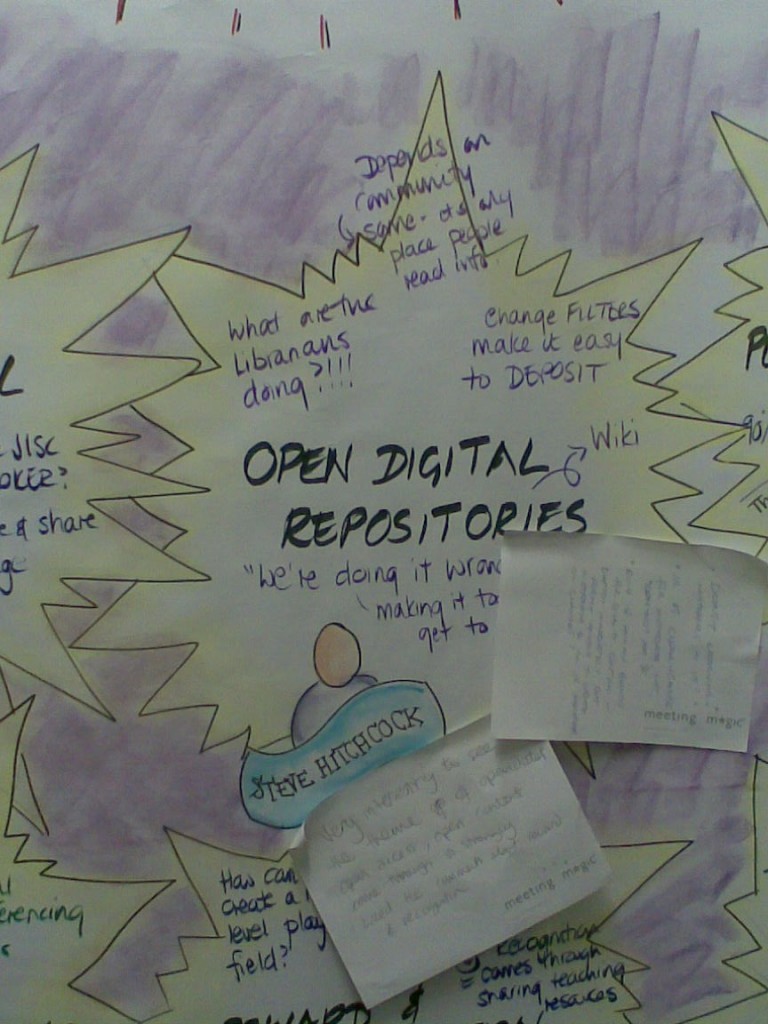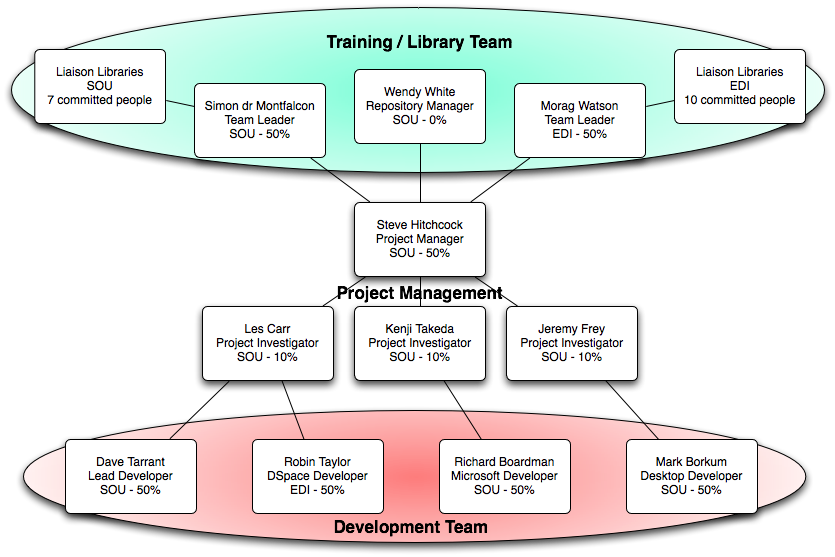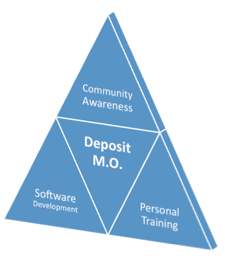 The following is a slightly extended and embellished version of a rapid-fire talk given in one of the Thunderbolts and Lightning (#2) sessions at the JISC Innovation Forum 2010. “What are the big thunderbolts in institutions today that you know about and you think your colleagues, including those from JISC, should also be aware of?”
The following is a slightly extended and embellished version of a rapid-fire talk given in one of the Thunderbolts and Lightning (#2) sessions at the JISC Innovation Forum 2010. “What are the big thunderbolts in institutions today that you know about and you think your colleagues, including those from JISC, should also be aware of?”
Strictly this is not is not about the DepositMO project, but it refers to the project, which prompted my theme here. I’ve been involved in a lot of JISC projects, and while we have produced many successes, perhaps few have produced thunderbolts. Maybe this one will.
Speakers had a maximum of 5 mins, and absolutely no extra seconds. Any unused time was thrown open for immediate responses. Across the whole session there were 12 volunteer speakers, and a panel of speakers was convened after each four. All presentations were simultaneously represented in a graphic, as shown, the whole session being represented on a single large sheet. Overall, a brilliant format.
 My interest is open digital repositories. Looking at the graphic from the first session, and after the opening speakers in this session, I know, this is so last year. But I contend we are doing repositories wrong.
My interest is open digital repositories. Looking at the graphic from the first session, and after the opening speakers in this session, I know, this is so last year. But I contend we are doing repositories wrong.
So what are we doing wrong? Many things probably, but here I want to focus on just one. In an age of austerity we should be planning, digitally, for an age of abundance. Our entry filters for repositories are set for print rather than digital – the filter is on the output side now, not on the input. So we make it harder for researchers to contribute content, to participate.
We are so stuck on quality control we learned with print. By seeking to eliminate the bad we are making it harder for people to find the good. In digital the bad is invisible, but the good can only be found if it is accessible and widely indexed all over the Web.
Take two simple repository examples: editorial buffers and mediated deposit. These delay the appearance of content in a repository. To what purpose? According to a recent poster, a survey found only 7% of deposit to repositories is author self-deposit. How will mediated deposit scale?
My own ‘institutional’ or School repository at Southampton, yet which was recently ranked 10 in the world – rather than the whole University of Southampton repository – some time ago made two important decisions.
First, the editorial buffer for light moderation of deposits had reached a backlog of days. So it was removed, with no discernible loss of quality, but the submitted content appeared on the Web instantly. The author is in control.
Second, a colleague deposited a paper which had me as a co-author. I spotted a couple of minor errors in the eprint record, as you do, and asked him to make corrections. You can edit it yourself, he said. Yes, I was an authorized repository editor, but I so rarely used that privilege that I could barely remember my password, I admitted. No, my colleague said, anyone eligible to submit to the repository can edit any record in the repository. Could this be true? Open spam season! Yes, it was true, and no, it has not ruined the repository.
These are simple examples of progressing from print to digital thinking, but print thinking is embedded in our decisions everywhere, and we are too wedded to old practices to recognize this.
How can we improve both deposit rates and speed of deposit to repositories? One approach is the new JISC project, Modus Operandi for Repository Deposit (DepositMO). The clue is in the title: deposit. The basic idea is we embed the facility for repository deposit in the workspace that most people use: Microsoft Office documents.
 Here’s the twist. It may be that deposit is a MacGuffin. A MacGuffin is a device famously used by my namesake, Alfred Hitchcock, and is essentially a plot driver that may turn out not to have been integral to the plot. That is, a distraction.
Here’s the twist. It may be that deposit is a MacGuffin. A MacGuffin is a device famously used by my namesake, Alfred Hitchcock, and is essentially a plot driver that may turn out not to have been integral to the plot. That is, a distraction.
It may turn out that DepositMO is not primarily about deposit, but about opening a dialogue with the researcher. Already we can see new possibilities, providing new services mediated in the cloud, for example, all opened via this new deposit interface.
In another current JISC project, KeepIt, we have been developing cloud services for repositories, and we have helped repository managers plan for an abundance of digital content by showing them how to discover the scope of that content. We have seen that in our institutions digital content is all around.
We have to re-program our digital filters, those within ourselves first, to allow our repositories to emerge and flourish. And we have to plan for digital abundance. If we do not, unsuccessful repositories will die, and successful repositories will be submerged under a flood of content.



 The DepositMO project aims to develop an effective culture change mechanism that will embed a deposit culture into the everyday work of researchers and lecturers. The proposal will extend the capabilities of repositories to exploit the familiar desktop and authoring environments of its users. The objective is to turn the repository into an invaluable extension to the researcher’s desktop in which the deposit of research outputs becomes an everyday activity. The target desktop software suite is Microsoft Office, which is widely used across many disciplines, to maximise impact and benefit. Targeting both EPrints and DSpace, leveraging SWORD and ORE protocols, DepositMO outputs will support a large number of organisations. The ultimate goal is to change the Modus Operandi of researchers so that repository deposit becomes standard practice across a wide number of disciplines using familiar desktop tools.
The DepositMO project aims to develop an effective culture change mechanism that will embed a deposit culture into the everyday work of researchers and lecturers. The proposal will extend the capabilities of repositories to exploit the familiar desktop and authoring environments of its users. The objective is to turn the repository into an invaluable extension to the researcher’s desktop in which the deposit of research outputs becomes an everyday activity. The target desktop software suite is Microsoft Office, which is widely used across many disciplines, to maximise impact and benefit. Targeting both EPrints and DSpace, leveraging SWORD and ORE protocols, DepositMO outputs will support a large number of organisations. The ultimate goal is to change the Modus Operandi of researchers so that repository deposit becomes standard practice across a wide number of disciplines using familiar desktop tools.

Recent Comments